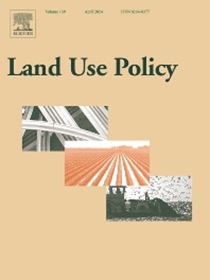Still suffering, still on the periphery? Different paths of the town's post-war spatial change. Evidence from north-eastern Poland
IF 6
1区 社会学
Q1 ENVIRONMENTAL STUDIES
引用次数: 0
Abstract
The scale of destruction of many historical cities due to the warfare of World War II and the varied directions of spatial transformation during the post-war political and economic uncertainty period in Poland was unprecedented. As a result, in many cities, we are confronted with a significant differentiation in the character of the development of central areas and numerous spatial and functional problems. The main objective of the study is to present the results of a comparative study of the varied forms and effects of rebuilding the historic centres of small towns in northeastern Poland after World War II. Small towns were selected because of their peripheral character to the large centres rebuilt in the first place. Out of a group of 17 towns in the Warmian-Masurian voivodeship destroyed in at least 70 %, three case studies with different land use policy approach were chosen. The paper proposes an original research model based on different spatial scales of analysis and quantitative and qualitative research methods of the built-up area. For this purpose field studies, graph method, built-up areas and planning document analyses based on contemporary and archival materials in a GIS environment were used. The results allowed for the classification of the directions of the post-war urban recovery and construction of case-study models of reconstruction based on neointegration (Węgorzewo), conditional restructuring (Lubawa) and the model of an unbuilt-up town (Kisielice). Our findings indicate that the negative consequences of the spatial transformations (e.g., spatial chaos, lack of a functional and spatial centre, unbuilt quarters and limited effectiveness of planning and revitalisation tools) are still felt today despite the corrective measures taken. They also suggest a need for local and regional debate on the needs and possibilities for further revitalisation of the study area and a recovery programme developed at the national level.
求助全文
约1分钟内获得全文
求助全文
来源期刊

Land Use Policy
ENVIRONMENTAL STUDIES-
CiteScore
13.70
自引率
8.50%
发文量
553
期刊介绍:
Land Use Policy is an international and interdisciplinary journal concerned with the social, economic, political, legal, physical and planning aspects of urban and rural land use.
Land Use Policy examines issues in geography, agriculture, forestry, irrigation, environmental conservation, housing, urban development and transport in both developed and developing countries through major refereed articles and shorter viewpoint pieces.
 求助内容:
求助内容: 应助结果提醒方式:
应助结果提醒方式:


